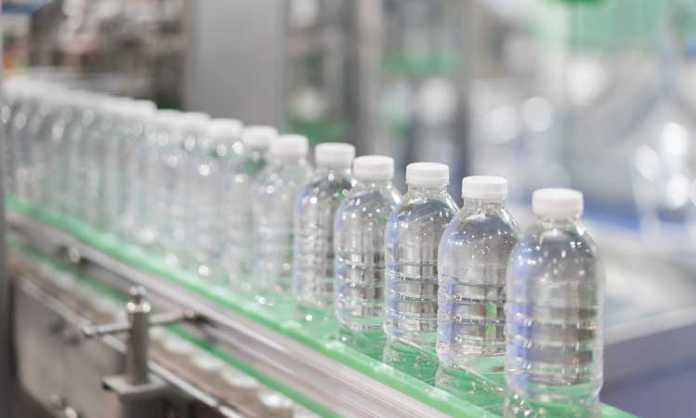It tastes better than tap water from the R.O. system. An examination gathered information expressed bottled water consumers state taste (99%), quality (99%), and wellbeing (92%) are the most significant elements when picking a drink. However, is bottled water as untouched as you think?
Sadly, late examinations show it may not be. Research from free specialists and Consumer Reports’ researchers uncovered that a few kinds of bottled water contain possibly dangerous levels of Arsenic. Over the most recent decade, Consumer Reports has considered water reports for over 130 bottled water brands. The outcome? At any rate, 11, bottled water brands had perceptible measures of Arsenic.
“It has neither rhyme nor reason that consumers can buy bottled water that is less protected than tap water,” says James Dickerson, Ph.D., a boss logical official at Consumer Reports.
This issue turned out to be much progressively unmistakable between late 2016 and mid-2017 when Whole Foods’ water image, Starkey Water, reviewed 2,000 instances of bottled water. Tests demonstrated an objectionable degree of Arsenic, which surpassed the federally ordered limit of 10 parts for each billion (ppb).
Only one year later, nonetheless, a similar organization’s inner trying demonstrated that their outcomes were simply under the federal limit, yet at the same time close enough to make wellbeing concerns if usually devoured.
Today, Consumer Reports is encouraging another full review of individual bottled water brands and mentioning stricter federal measures in its ongoing article.

What is Arsenic And Its Effects on the Body?
Arsenic is a normally happening component found in rocks and soil and is utilized in the farming business as a pesticide. It can wind up in the water supply when particular sorts of rocks and minerals disintegrate over time or from horticultural spillover.
Arsenic is dull and scentless. It tends to be exceptionally dangerous at specific levels, which is the reason the EPA set the standard for drinking water at 10 ppb or less. Rarely do we need to quantify anything by parts per billion, yet to place it in context we can think of a normal 16’x50′ pool that holds 10,000 gallons of water. On the off chance that you take an eyedropper and crush in 10 drops of squeezed orange, that pool currently has 10 ppb of squeezed orange in it.
Scale that proportion down to the measure of water inside the suppress you just picked from the market, and the rule of the adequate Arsenic inside is little!
As Per The EPA, Non-Malignant Growth Reactions Of Drinking Water With Raised Levels Of Arsenic Include
- Stomach torment
- Sickness
- Regurgitating
- Looseness of the bowels
- Deadness in hands and feet
- Halfway loss of motion
- Visual impairment
- Staining of skin
What’s The Difference In Bottled Water?
When you go to the supermarket today, you’re likely overwhelmed by bottled water choices. Springwater, cleaned water, water purifier system, what’s the distinction, and how is it treated?
The critical contrasts in bottled water are the water source and the kind of filtration. For example, spring water originates from a natural underground spring and experiences a filtration procedure to evacuate particles and undesirable contaminants – this is likely a kind of carbon filtration to improve taste and scent. Spring water contains natural minerals and contaminants.
Filtered or distilled water, by and large, originates from municipal tap water or spring water, experiences a new decontamination procedure, for example, deionization, refining, or conceivably turn around assimilation that would lessen arsenic content. The issue is that consumers don’t generally know how the water is dealt with because of bottled water brands’ vague marking.
Toward the day’s end, everything sounds like it’s been sanitized appropriately, yet as Consumer Reports’ examination uncovered, contaminants, for example, Arsenic may at present exist. Consumer Reports’ table underneath shows five brands that revealed arsenic levels of at any rate 3 ppb, which is the thing that Consumer Reports and others are suggesting for the new federal limit.
What Are The Alternatives To Bottled Water?
As a consumer, it’s difficult to tell what’s unadulterated and so forth. Fortunately, some alternatives are safer to expand as well as come directly from the spigot in your home.
Have a turn around assimilation (R.O.) framework introduced.
An R.O. framework is the ideal approach to get incredible tasting, pure drinking water for your home. With an R.O. framework, you can radically diminish undesirable contaminants.
R.O. frameworks have a unique layer that channels out numerous minuscule life forms and overwhelming metals, for example,
- Arsenic
- Barium
- Chromium
- Copper
- Sore (cryptosporidium)
- Fluoride
- Lead
- Nitrates and nitrites (hexavalent and trivalent)
- Radium
- Selenium
- All out disintegrated solids (TDS)
Water-Right’s Eclipse™ R.O., Impression Series® R.O., and UltroWater® frameworks are tried and confirmed for contaminant evacuation. Peruse increasingly about the advantages of drinking R.O. water and figure out how R.O. frameworks work in a portion of our different articles.
Bid Farewell To Bottled Water
When you change to a sheltered alternative to bottled water, you lessen a great deal of waste that often winds up unrecycled and in landfills. Water jugs can be costly, and over time, exchanging will probably pay for itself as you possibly pay pennies per gallon when you channel the water yourself versus individual jugs.




























